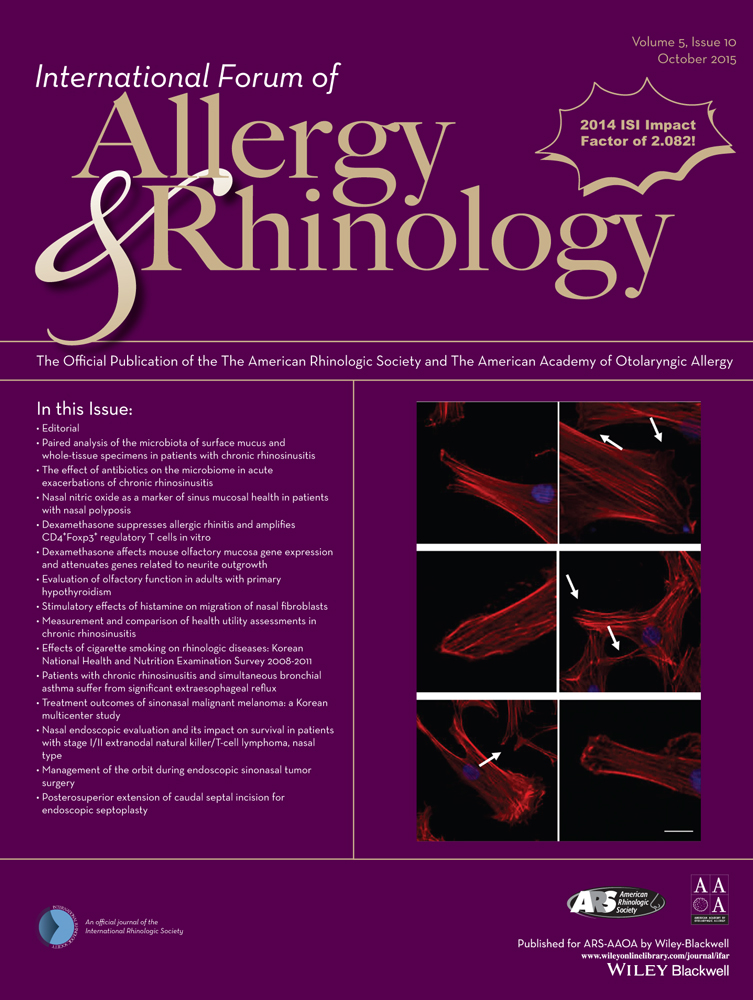Paired analysis of the microbiota of surface mucus and whole-tissue specimens in patients with chronic rhinosinusitis
Funding sources for the study: Green Lane Research and Educational Fund Board.
Potential conflict of interest: None provided.
Abstract
Background
The role of bacteria in the pathogenesis of chronic rhinosinusitis (CRS) remains uncertain. Recent evidence suggests that bacteria are able to establish microcolonies within the underlying mucosa. However, to date there has been no systematic comparison of bacterial community composition and diversity in the surface mucosa with that of the underlying tissue.
Methods
Paired swabs and whole-tissue samples were collected from the middle meatus of 9 patients with CRS undergoing endoscopic sinus surgery. The bacterial composition and diversity of the samples were determined using 16S rRNA gene amplicon pyrosequencing.
Results
The bacterial communities of both swabs and tissues were dominated by known residents of the sinonasal cavity such as Staphylococcus, Corynebacterium, Prevotella, and Peptoniphilus. Although bacterial diversity (richness) did not differ between the 2 groups of samples, there were significant differences in the composition of bacterial communities. Molecular analyses revealed a large amount of interpersonal variation between patients.
Conclusion
Swab and tissue samples revealed similar bacterial diversity to each other and to that of other microbiota studies reported in the CRS literature. However, bacterial composition was significantly different between the 2 sample types, even though the tissue biopsies also comprise bacteria from the surface. We speculate that the bacteria on the surface seed the underlying tissue via the damaged epithelium in CRS patients, which over time develops into a distinct bacterial community.




